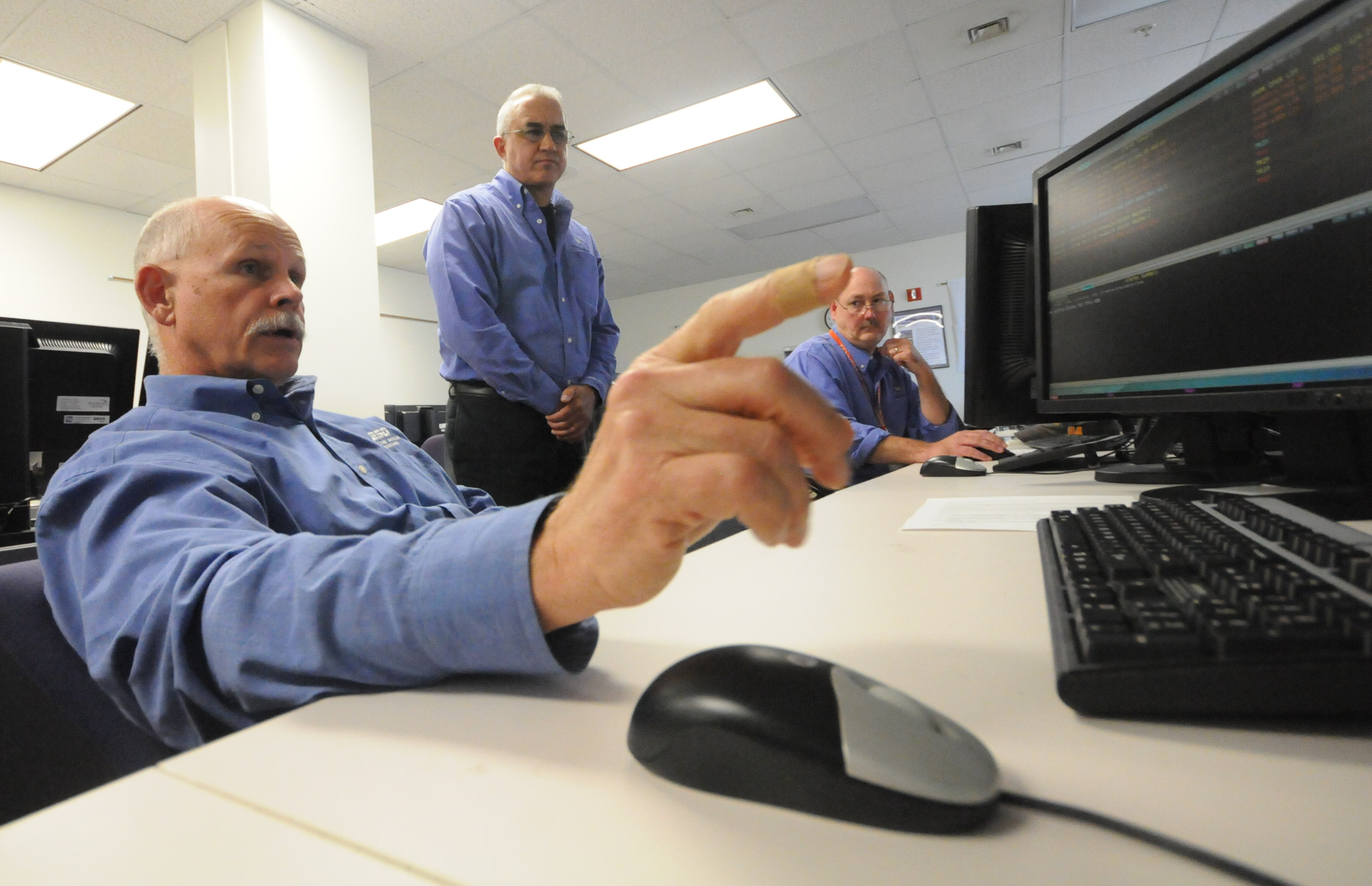They are some of the most powerful people most of us never see, at least in how they control the electricity that powers parts of a dozen states.
In a windowless bunker beneath TVA's downtown Chattanooga office complex, two dozen power systems operators stare at banks of computer screens and a 125-foot wall of flashing lights around the clock to make sure there is just the right amount of power delivered across TVA's seven-state region and the broader Southeastern reliability district that serves six power utilities.
From this nerve center for America's biggest government utility, power is traded, dispatched and altered continually to align generation with the changing demands of more than 10 million people across the mid-South.
"Electricity is an intangible commodity that can't be stored so we must continually match the generation and transmission with the changing demand from our customers," said Mike Fielden, senior program manager at TVA's power systems training facility. "How many commodities do you know of that you can use all you want, when you want it, and you get that delivered instantly to you? You even get to settle up on the costs later."
Fielden is one of the trainers for TVA power system operators responsible for keeping the juice flowing across the Tennessee Valley. The training staff has more than tripled since 2003 when America's worst electrical blackout left more than 50 million persons in the dark.
The blackout 11 years to the day Thursday - the worst power outage in U.S. history - began when a tree fell on a power line in Ohio. The power outage quickly cascaded across eight states, interrupting phone service, disrupting transportation and cutting off lights and air conditioning in the sweltering summer in eight Northeast and Midwest states and Canada.
TVA did not lose power during the 2003 blackout, which the federal utility managed to keep separated from its own generation and transmission. But the sweeping federal changes in America's electricity grid brought about in response to the 2003 blackout have changed the power operations of TVA and all other U.S. electric utilities.
"The nuclear industry had to change after the accident at Three Mile Island and we had to change after the 2003 blackout," Fielden said.
To ensure power system operators are ready for nearly any kind of accident, the National Electricity Reliability Council now requires operators to pass exams and get at least 70 hours a year in continuing education. TVA set up a Siemens Spectra Power simulator on the seventh floor of the downtown Edney building. In the simulator, controllers work through a variety of virtual problems so they can learn how to prepare for power outages caused by falling tree, animals, equipment failures and potentially even a terrorist attack.
The classroom setting is nearly identical to the power systems center across the street in the TVA office complex, although the real facility has far more visual displays to help operators continually monitor activity.
Some of the operators in the systems operations center work to balance the electric load between what consumers want and what TVA and other utilities and independent power producers generate. Too little generation for the demand causes electricity to flow less rapidly that the ideal 60 Herz and too much generation causes too much flow above the 60 Herz target.
Weather is one of the biggest drivers in the variable demand so TVA employs its own meteorologist to forecast weather conditions every day. Each degree of hot or cold can raise or lower TVA's overall demand by 350-400 megawatts. A 4-degree increase in temperature on a summer day boosts the power demand enough to use all of the power generated by one of TVA's nuclear reactors.
With its integrated generation and transmission network of more than 16,000 miles of power lines, TVA has maintained 99.999 percent reliable power delivery for each of the past 14 years. Since 2010, the typical TVA customer has had less than four minutes a year of power outages, TVA spokesman Scott Brooks said.
Such reliability is reinforced by transmission specialists for TVA and reliability coordinators for the entire region, who sit behind those balancing power loads in TVA's system operations center. Information from more than 100,000 different data points comes into the center where workers continually check for transmission line problems or unexpected trips at power generating plants.
"It's all about keeping the lights on," said David Plumb, a transmission system operator trainer at TVA who was only a few days into his job in the power control center in 2003 when the blackout hit the Northeast. "When we do our jobs right, most people don't have to think about what we do every day."
Contact Dave Flessner at dflessner@timesfreepress.com or at 757-6340.

